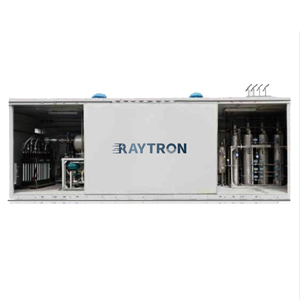Introduction
Proton Exchange Membrane (PEM) electrolysis is gaining attention. It offers a clean method for hydrogen production. This technology uses electricity to split water into hydrogen and oxygen. PEM electrolysis is efficient and environmentally friendly. It has the potential to revolutionize the energy sector. This article explores the prospects of PEM electrolysis in hydrogen production.
How PEM Electrolysis Works
PEM electrolysis involves an electrochemical process. It uses a proton exchange membrane as the electrolyte. Water is supplied to the anode side of the electrolyzer. An electric current is applied to split water into oxygen, protons, and electrons. Protons pass through the membrane to the cathode. Electrons travel through an external circuit. At the cathode, protons and electrons combine to form hydrogen gas.
Advantages of PEM Electrolysis
PEM electrolysis has several advantages over other methods. It operates at low temperatures, typically between 50-80°C. This reduces energy consumption and increases efficiency. The system is compact and lightweight. It can be easily integrated into various applications. PEM electrolyzers have fast response times. They can quickly adjust to changes in power supply. This makes them ideal for use with renewable energy sources.
Challenges in PEM Electrolysis
Despite its advantages, PEM electrolysis faces several challenges. The cost of materials is high. Precious metals like platinum are used as catalysts. This increases the overall cost of the system. The durability of the membrane is another issue. It can degrade over time, reducing efficiency. Scaling up production is also a challenge. Current systems are not yet cost-effective for large-scale use.
Recent Advances in PEM Technology
Recent research has focused on overcoming these challenges. New materials are being developed to replace precious metals. Non-precious metal catalysts show promise. They are cheaper and more abundant. Advances in membrane technology have improved durability. New designs are more resistant to degradation. Researchers are also working on reducing the cost of production. This includes optimizing manufacturing processes and scaling up production.
Integration with Renewable Energy
PEM electrolysis is well-suited for integration with renewable energy. Solar and wind power are intermittent. PEM electrolyzers can quickly adjust to these fluctuations. This makes them ideal for storing excess energy. Hydrogen produced can be used later. It can be converted back into electricity or used as fuel. This helps balance the grid and increase the use of renewables.
Applications of PEM Electrolysis
PEM electrolysis has a wide range of applications. It is used in the production of green hydrogen. This hydrogen can be used in fuel cells for transportation. It is also used in industrial processes. Hydrogen is a key feedstock for ammonia production. It is used in refining and chemical industries. PEM electrolysis can also be used for energy storage. It provides a way to store excess renewable energy.
Economic Considerations
The economic viability of PEM electrolysis is improving. Costs are expected to decrease with technological advancements. Increased production scale will also reduce costs. Government incentives and subsidies can further support adoption. The growing demand for green hydrogen is driving investment. This is leading to more research and development. The market for PEM electrolysis is expected to grow significantly.
Environmental Impact
PEM electrolysis has a low environmental impact. It produces hydrogen without emitting greenhouse gases. The only by-product is oxygen, which is harmless. When powered by renewable energy, it is a truly green technology. This makes it an attractive option for reducing carbon emissions. It can play a key role in achieving climate goals.
Comparison with Other Electrolysis Methods
PEM electrolysis is often compared with alkaline electrolysis. Alkaline electrolysis is a more mature technology. It is cheaper but less efficient. PEM electrolysis offers higher efficiency and flexibility. Solid oxide electrolysis is another method. It operates at high temperatures and offers high efficiency. However, it is less suitable for intermittent renewable energy. PEM electrolysis strikes a balance between efficiency and flexibility.
Future Prospects
The future of PEM electrolysis looks promising. Technological advancements are expected to continue. This will lead to lower costs and higher efficiency. The integration with renewable energy will increase. This will drive the adoption of PEM electrolysis. The demand for green hydrogen is expected to grow. This will create new opportunities for PEM technology. It has the potential to become a key player in the energy transition.
Policy and Regulatory Support
Government policies play a crucial role in the adoption of PEM electrolysis. Incentives and subsidies can accelerate development. Regulations can promote the use of green hydrogen. International cooperation is also important. This can help standardize technologies and reduce costs. Policies that support renewable energy will benefit PEM electrolysis. This will create a favorable environment for growth.
Investment and Market Trends
Investment in PEM electrolysis is increasing. Both public and private sectors are investing in research and development. Venture capital is flowing into startups focused on PEM technology. Established companies are also expanding their portfolios. The market for PEM electrolysis is expected to grow rapidly. This is driven by the demand for clean energy solutions. The competition is expected to drive innovation and reduce costs.

